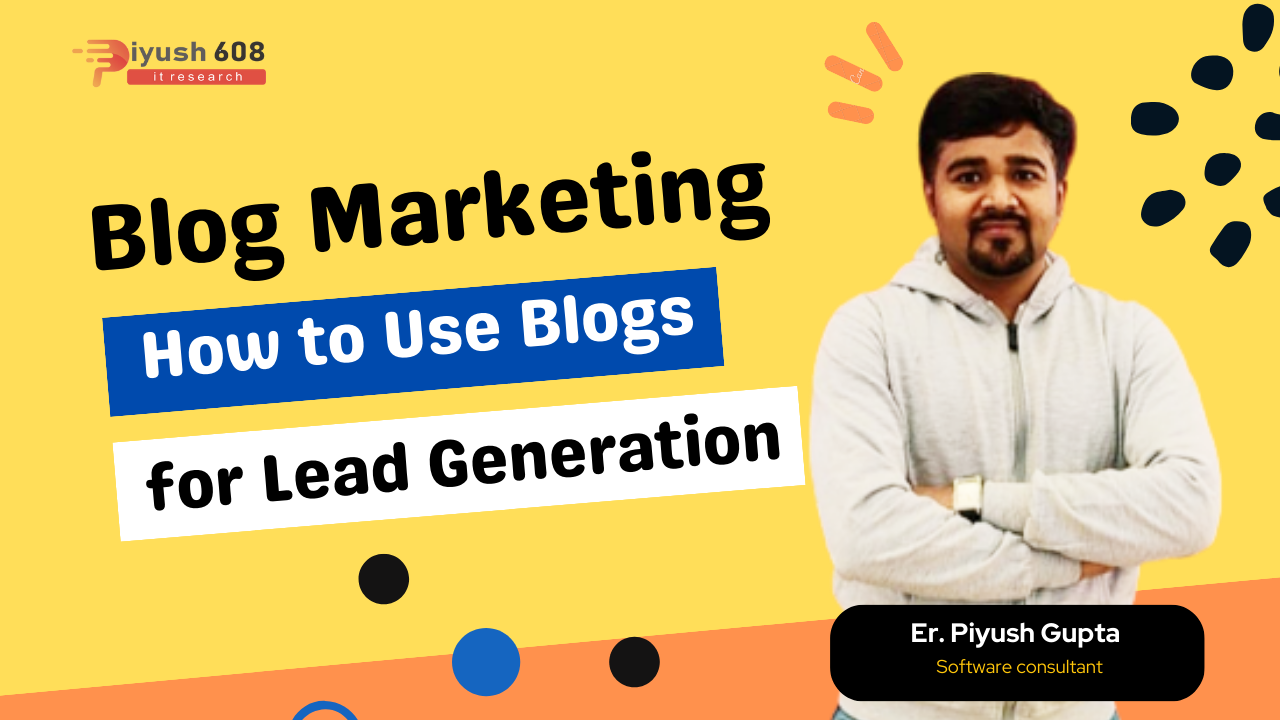
Using a blog for lead generation is an effective content marketing strategy. By creating valuable, informative, and engaging content, you can attract and convert website visitors into leads. Here’s a step-by-step guide on how to use a blog for lead generation:
1. Understand Your Audience:
- Identify your target audience and their pain points. Know what information or solutions they are seeking. This will guide your content creation.
2. Develop High-Quality Content:
- Create well-researched, informative, and engaging blog posts that address your audience’s needs. Your content should provide value and demonstrate your expertise.
3. Optimize for SEO:
- Use relevant keywords and optimize your content for search engines. This will help your blog posts rank higher in search results, increasing their visibility.
4. Use Lead Magnets:
- Offer lead magnets such as eBooks, whitepapers, checklists, templates, or webinars relevant to your blog content. Promote these within your blog posts as valuable resources.
5. Implement Clear CTAs:
- Place clear and compelling call-to-action (CTA) buttons or links within your blog posts. Encourage readers to take a specific action, like downloading a lead magnet, signing up for a newsletter, or requesting a demo.
6. Landing Pages:
- Create dedicated landing pages for your lead magnets. These pages should provide more information about the offer and capture user information through a form.
7. Opt-In Forms:
- Embed opt-in forms on your blog to collect visitor information. These forms should be strategically placed, such as in the sidebar, as pop-ups, or within the content itself.
8. Offer Content Upgrades:
- Enhance your blog posts by offering content upgrades – additional resources or in-depth guides related to the blog topic. Visitors can access these in exchange for their contact details.
9. A/B Testing:
- Continuously test and optimize your CTAs, forms, and landing pages to improve conversion rates. A/B testing can help you identify what works best for your audience.
10. Email Marketing: – Use email marketing to nurture leads. Send personalized follow-up emails with more valuable content, educational material, and promotions.
11. Social Sharing and Promotion: – Promote your blog posts on social media to increase visibility and attract a wider audience. Encourage readers to share your content.
12. Guest Blogging: – Consider guest posting on relevant, high-traffic blogs to increase your blog’s exposure and reach a new audience.
13. Analyze and Adjust: – Monitor the performance of your blog posts and lead generation efforts. Use website analytics tools to track visitor behavior and conversion rates. Adjust your strategy based on the data.
14. Consistency: – Consistent publishing is key. Regularly update your blog with fresh and relevant content to keep your audience engaged.
15. Personalization: – Personalize your content and offers based on user behavior and preferences. Tailoring content to individual interests can boost lead generation.
16. Educate and Inform: – Focus on educating your audience and providing solutions to their problems. The more valuable your content, the more likely visitors are to become leads.
Using a blog for lead generation is a long-term strategy that requires patience and persistence. By creating a steady flow of high-quality content and continually optimizing your approach, you can build a robust lead generation engine that benefits your business.


 +91 7905834592
+91 7905834592
 Enquiry Now
Enquiry Now
 piyushmnm@gmail.com
piyushmnm@gmail.com
 piyush.gupta384
piyush.gupta384
Reviews
There are no reviews yet. Be the first one to write one.